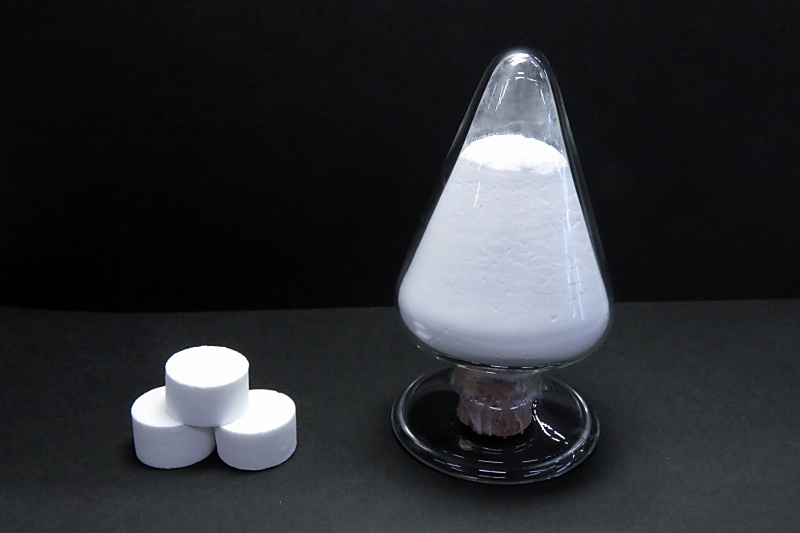
Canon Optron: Developed oxide-based solid electrolyte for all-solid-state LIB:
-The whole picture of amazing substances that are highly conductive and low-temperature sintered-
Canon Optron
National Institute of Advanced Industrial Science and Technology
In a joint research, we have developed an oxide-based solid electrolyte for all-solid-state LIB.
For all solid LIB
Oxide-based solid electrolyte
While having high conductivity
Sintered at a lower temperature than conventional solid electrolytes,
Suppresses the formation of resistant substances.
Mass production sales in 2023:
A production line for solid oxide electrolytes will be set up in the head office factory.
It is planned to be mass-produced and sold in the first half of 2023.
Greatly improved conductivity:
Specific dissimilar elements were added to the crystalline material.
The conductivity that affects the battery output has been greatly improved.
An all-solid-state LIB using an oxide-based solid electrolyte is expected to have high safety.
Conventionally the problem with solid electrolytes:
At the time of battery production, it was necessary to sinter at 1000 degrees C or higher.
When heated at high temperatures, the mixed active material chemically reacts.
It becomes a resistance substance that inhibits the movement of lithium ions.
There was a problem that the battery could not obtain sufficient output.
Introducing a new solid electrolyte:
Sinter at about 600-700 degrees C in the air atmosphere.
It can suppress the chemical reaction with the active material and improve the output of lithium ions.
New switch
Canon Optron develops oxide-type solid electrolytes for all-solid-state lithium ion batteries Mass production to begin in 2023,
contributing to the accelerated development of practical applications for all-solid-state batteries
TOKYO, March 9, 2022—Canon Optron, Inc. (Headquarters: 1744-1, Kanakubo, Yuki City, Ibaraki Prefecture, Japan), in collaboration with the National Institute of Advanced Industrial Science and Technology (AIST),
has developed an oxide-type solid electrolyte that can be sintered at lower temperatures than conventional solid electrolytes.
In addition to high conductivity,
the electrolytes have stability in air and can be supplied to a wide range of customers for a variety of applications. Canon Optron will exhibit the new oxide-type solid electrolytesat the 13th International Rechargeable Battery Expo BATTERY JAPAN, to be held in Tokyo from March 16 to 18.
Lithium ion batteries (LIBs)
are used in mobile devices and automobiles.Recently, there has been increased attention focused on all-solid-state LIBs, in which the liquid electrolyte is replaced by a flame-retardant solid electrolyte.
Among all-solid-state LIBs, those that use oxide-type solid electrolytes with high chemical stability are considered highly safe.
However,
there are problems with conventional oxide-type solid electrolytes in terms of low lithium ion conductivity and the formation during battery manufacturing of a resistive material that reduces battery output.In response,
Canon Optron has developed an oxide solid electrolyte that has high conductivity but can be sintered at a lower temperature than conventional solid electrolytes, thus suppressing the formation of resistive materials.The company plans to set up a production line for oxide solid electrolytes in its main plant in Yuki City, Ibaraki Prefecture,
and start mass production and sales in the first half of 2023.
-more- Mar 9, 2022
Appearance of the developed oxide-type solid electrolyte Left: Granular type / Right: Pellet type 1
■Realization of high conductivity over 10-5 S/cm By adding specific heterogeneous elements to a crystalline material,
which had never been the focus of attention as a solid electrolyte,
Canon Optron has succeeded in significantly improving conductivity, a factor that affects battery output.
This research on solid electrolytes
has led to recognition of the value of such material, and a research paper on 1 the subject has been published in the journal RSC Advances .
https://optron.canon/ja/news/img/20220309_news_release_en.pdf